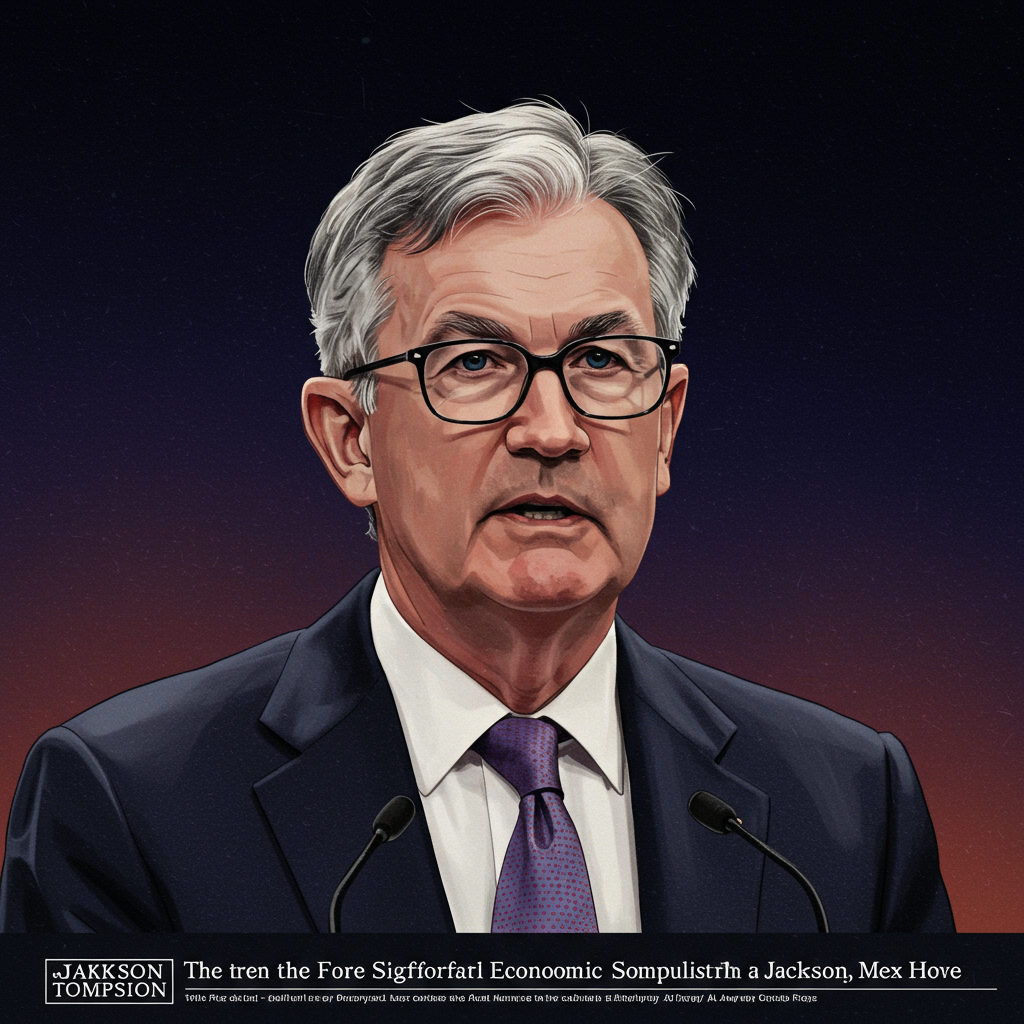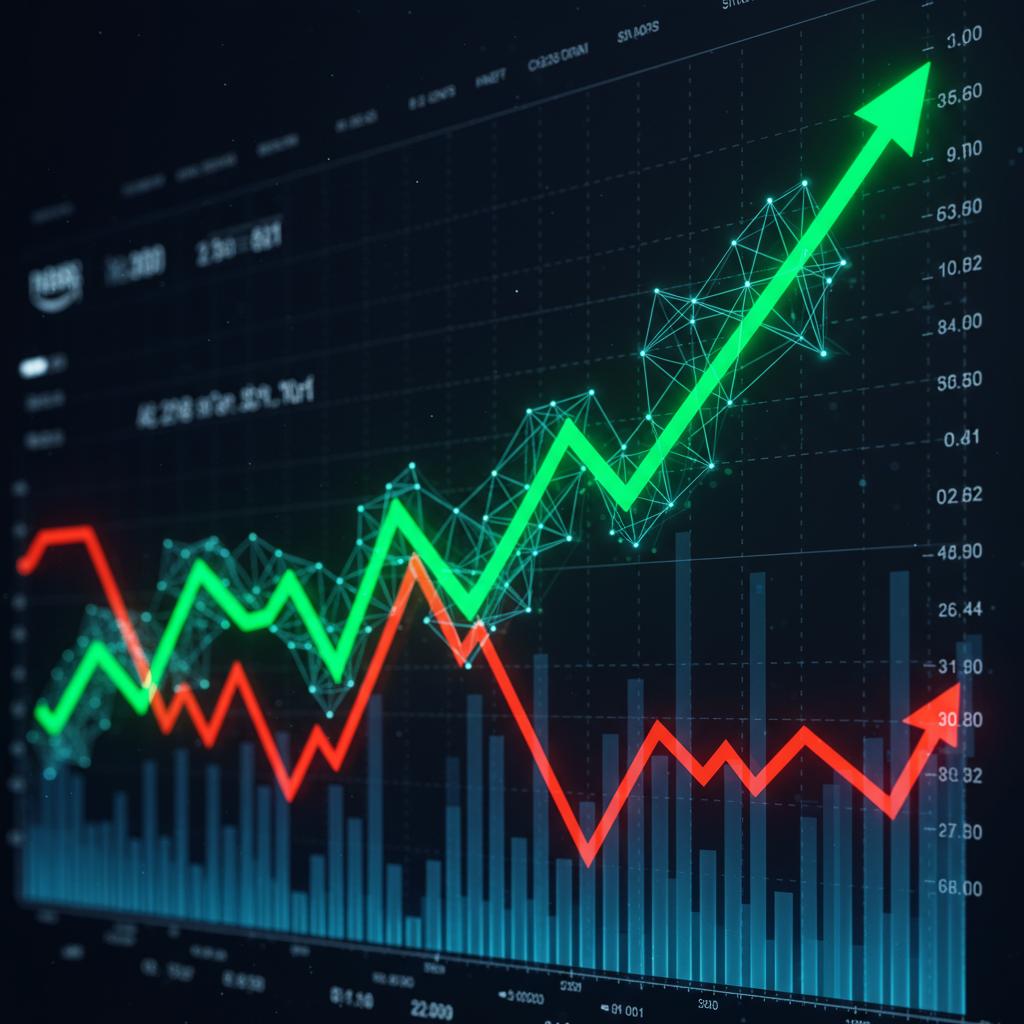Wall Street has been holding its breath, anticipating a clear signal from Federal Reserve Chair Jerome Powell at the Jackson Hole Economic Symposium regarding an imminent interest rate cut. Yet, as the highly anticipated August 2025 event draws near, fresh economic data and evolving expert perspectives are rapidly dimming those once-certain hopes. Investors are now grappling with the growing possibility that the Fed may hold its ground, challenging the widespread belief in a September rate reduction.
The Shifting Sands of Market Expectations
For weeks, financial markets have been pricing in significant interest rate cuts for 2025, with September widely tipped as the starting point for the Federal Reserve’s easing cycle. Just a short while ago, confidence ran high, with CME’s FedWatch tool indicating an astounding 95% certainty of a September base rate reduction to between 4% and 4.25%. This aggressive market positioning reflected a strong belief that the Fed would prioritize its maximum employment mandate amidst perceived labor market softening.
Initial Certainty vs. Current Reality
This strong market conviction was initially fueled by a “shock jobs report” from the Bureau of Labor Statistics. This report suggested a weaker-than-expected employment market, leading investors to believe the Federal Open Market Committee (FOMC) would act swiftly. Even a “better-than-expected” consumer inflation report, despite core inflation “inching over 3%,” added to this optimism. Treasury Secretary Scott Bessent even publicly questioned if a larger rate cut could be justified.
However, the landscape has fundamentally shifted. The once-near-certainty of a September cut has fallen below 85% odds. This cooling enthusiasm is a direct result of new economic signals that paint a less accommodative picture, forcing a re-evaluation of the Fed’s likely trajectory.
The Data That Changed Everything
A pivotal factor in dampening rate cut expectations is the July Producer Price Index (PPI) data. This report revealed the fastest annual increase since March 2022, signaling that inflationary pressures are not dissipating as quickly as hoped. This suggests that rising producer costs could soon translate into higher consumer prices, undermining the Fed’s inflation-targeting efforts.
Adding to the complexity are the anticipated ripple effects of President Donald Trump’s proposed tariff plans. Analysts are concerned these tariffs could exacerbate inflationary pressures, potentially bleeding into the domestic economy and making it even harder for the Fed to ease monetary policy. Michael Pearce, deputy chief U.S. economist at Oxford Economics, notes these tariffs are “feeding through unevenly” and will continue to exert upward pressure on prices. This combination of persistent core inflation, already above the Fed’s 2% target, and the potential impact of tariffs, creates a challenging environment for policymakers.
Jackson Hole: A Historic Crossroads for Policy
The Jackson Hole Economic Symposium, hosted annually by the Federal Reserve Bank of Kansas City in Moran, Wyoming, holds a unique and influential position in the financial calendar. Historically, this gathering has served as a crucial platform for significant monetary policy announcements and shifts. Many speculate whether Chair Powell will uphold this tradition. His speech, notably titled “Economic Outlook and Framework Review,” suggests a deeper dive into the Fed’s long-term strategy.
Powell’s Framework Review
The “Framework Review” aspect of Powell’s speech is drawing particular attention from economists. The last such review in 2020 led to a notable shift in the Fed’s approach. It introduced average inflation targeting—allowing inflation to exceed 2% to compensate for past periods of undershooting—and a reinterpretation of full employment, moving away from a preemptive approach to tightening policy based solely on a tightening labor market.
Deutsche Bank’s macro strategist, Henry Allen, highlights the profound implications of this 2020 framework, concluding that it contributed to the subsequent major burst of inflation. Allen anticipates Powell’s 2025 speech will likely call for rolling back these 2020 modifications. This could restore a primary role for preemptive policy, where the Fed aims to get ahead of future inflation risks rather than reacting retrospectively. Such a move would significantly disappoint those expecting immediate rate cuts.
The Dual Mandate Dilemma
The Federal Reserve operates under a dual mandate: achieving maximum employment and maintaining price stability. Recent economic data has presented conflicting signals, creating a dilemma for the Fed. While some jobs data has softened, indicating a potential weakening in the labor market, the underlying debate continues: does this signify weak demand for workers, or is it a symptom of weak labor supply? If the latter, then interest rate cuts could perversely exacerbate inflation, rather than alleviating it. This complex interplay between employment and inflation data will heavily influence Powell’s messaging and the Fed’s future actions.
Expert Voices: Divided on Powell’s Next Move
As the Jackson Hole Symposium approaches, the financial world is abuzz with speculation. Analysts and economists are largely divided on whether Powell will deliver the rate cut signal Wall Street so desperately craves.
The Case for Holding Steady
A notable outlier from the market consensus is Bank of America (BofA). Their global economists, Claudio Irigoyen and Antonio Gabriel, strongly advocate for the Fed to maintain its current policy rate. They argue that persistent inflation over the past year, coupled with the anticipated “tariff pass-through” effects and a historically low unemployment rate, makes a compelling case for the Fed to remain on hold. They suggest Powell might “walk the talk” by stating that “the policy stance remains appropriate given the data at hand,” allowing flexibility without premature commitment.
Veteran market analyst Ed Yardeni of Yardeni Research echoes this skepticism. He maintains a “none-and-done” forecast for the year, predicting the Fed will likely keep rates steady due to persistent inflation and the robust resilience of the U.S. economy. Yardeni expects Powell to adopt an “owl”-like stance—observing and waiting—rather than leaning hawkish or dovish, emphasizing the Fed’s “data-dependent” approach.
Subtle Hints or Clear Signals?
Even among those economists who still anticipate a September rate cut, there’s doubt about whether Powell will overtly signal it at Jackson Hole. JPMorgan, for example, believes that while recent jobs data might tilt the Fed towards prioritizing employment, conflicting signals from recent Fed speakers—who have stated the case for a cut “has not been made”—and upcoming employment data mean Powell “can’t firmly guide toward easing.”
Andrew Hollenhorst, chief U.S. economist at Citi Research, anticipates a more nuanced approach. He expects Powell to hint at a cut, but without explicit commitment. This subtle indication might come in the form of a remark that the risks to employment and inflation are becoming more balanced. Powell previously indicated that balanced risks would warrant a more neutral policy stance, and he currently describes the rate level as “modestly restrictive.” If recent labor market data continues to show softening, Powell could justify a cut next month. Hollenhorst expects Powell to “confirm market pricing for a return to rate cuts in September” without committing to the exact meeting or size.
Market Reaction and Investor Outlook
In the immediate lead-up to Powell’s speech, global financial markets have largely adopted a wait-and-see approach. S&P 500 futures remained flat, while European indices like the STOXX Europe 600 and the U.K.’s FTSE 100 experienced modest declines. Asian markets, including Japan’s Nikkei 225 and China’s CSI 300, posted slight gains. Bitcoin also saw a decline to $115,180. These mixed signals reflect the deep uncertainty gripping investors as they await clarity from the Federal Reserve.
Navigating Uncertainty
The market’s current equilibrium, despite the fading rate cut odds, underscores the profound impact Powell’s forthcoming statements will have. Any indication of a delay in rate cuts would be a significant letdown for markets that have so thoroughly priced in a September reduction. According to Preston Caldwell, chief U.S. economist at Morningstar, such a delay would “constitute an effective tightening of monetary policy at this stage.”
What’s Next for Interest Rates?
The overwhelming consensus points to the Fed remaining highly data-dependent. Upcoming economic reports, particularly the August jobs report, will play a crucial role in shaping the Fed’s decisions post-Jackson Hole. Investors should prepare for potential volatility as markets digest Powell’s message and subsequent economic releases. The key takeaway is that the path to rate cuts is likely more complex and less certain than Wall Street had initially hoped, requiring careful monitoring of inflation trends, labor market dynamics, and geopolitical factors like tariffs.
Frequently Asked Questions
Why are market expectations for a September rate cut fading?
Market expectations for a September interest rate cut have declined significantly due to recent economic data. The July Producer Price Index (PPI) showed the fastest annual increase since March 2022, signaling persistent inflationary pressures. Additionally, core inflation remains above 3%, and concerns about President Trump’s proposed tariffs adding to price increases are weighing on the Fed’s ability to ease monetary policy. These factors challenge the earlier optimism fueled by a weak jobs report.
How does the Jackson Hole Symposium influence Federal Reserve policy?
The Jackson Hole Economic Symposium is a pivotal event where Federal Reserve officials, including the Chair, often signal significant shifts in monetary policy. Chair Jerome Powell’s 2025 speech, titled “Economic Outlook and Framework Review,” is particularly scrutinized. This title suggests a re-evaluation of the Fed’s 2020 policy framework, which shifted towards average inflation targeting. Any adjustments could indicate a move towards a more preemptive stance on inflation, potentially delaying rate cuts.
What should investors anticipate from Jerome Powell’s speech at Jackson Hole?
Investors should anticipate a cautious, data-dependent stance from Jerome Powell. While Wall Street is hoping for a clear signal of a September rate cut, many analysts believe Powell will avoid an explicit commitment. He may hint at balanced risks between employment and inflation, or emphasize that policy remains “appropriate given the data at hand.” The speech is expected to provide clarity on the Fed’s future direction, particularly regarding its long-term inflation strategy and willingness to cut rates amidst conflicting economic signals.



